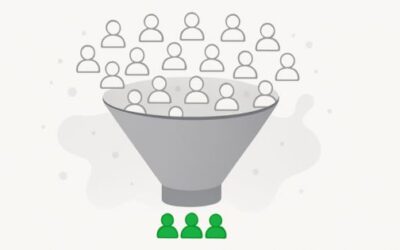I’m going to cut to the chase, if you’re not coachable, you are a liability. Leaders, do yourselves a favor and remove the uncoachable folks from your team. Coachability is one of, if not the most important trait of an employee. Not everyone fits neatly into the mold of being receptive to feedback and guidance. The challenge of dealing with these uncoachable employees is a tall order.
Who are the uncoachables?
Let me be very clear about this, there are uncoachable individuals and there are people who do not fit your culture or your leadership style.
What uncoachable employees are not
I know someone is going to read this and call me out. I am not talking about people who have different styles or who accept criticism/feedback in different ways. That’s a culture mismatch. I am not talking about that person. That’s an entirely different challenge.

Get The Comprehensive Breakdown of Why Sales Numbers Keep Falling
Sales numbers keep falling despite record investment. This breakdown exposes the systemic failures driving the decline.
What uncoachable employees are
Uncoachable people are defiant, they’re know-it-alls. They don’t listen, they argue, they put up walls, they don’t take accountability, and they push back at every chance they can.
Why the uncoachable pose a challenge
Having a member, who resists coaching, on your team is a significant barrier to growth. These people could exhibit a wide range of counterproductive behaviors, from outright defiance to a subtler but equally damaging resistance to feedback. They are the immovable objects in the path of your organization’s unstoppable force towards growth.
The core issues
Uncoachable individuals are characterized by their defensiveness, refusal to listen, and propensity to push back when they’re subject to constructive criticism. It’s a systemic hazard that undermines the strive for growth.
Leadership Strategies
Identify the Uncoachable
First things first, as a leader, you need to identify the individuals that refuse to be coached. Recognize any team members who show signs of resistance to feedback and understand the impact of this refusal on the team, your leadership abilities, and the organization’s growth potential. You must be an astute observer of what is being said, what is being done or not done, and the resulting effect on the culture.
Decision to remove
Once you’ve identified a potential threat, comes the hard part: removal of that individual. It sounds harsh, but with the impact measured, the rationale should be solid and defendable. Uncoachable employees, by their nature, will not change. Their continued presence risks create a hostile environment. You’ve likely heard the term ‘cancer in the locker room.’ This is the same thing, one bad apple can spoil the whole bunch.
Coachability Culture
Removing the bad apple is not the end. It is a means to a broader goal of fostering a culture where coaching, coachability, and continuous improvement is valued and nurtured. Consistent feedback should be constant and sought after by team members. Challenges should be embraced as opportunities to grow and learn. The goals of the team should be drivers for individual improvement.
Leadership’s role
Leaders play a crucial role in this process. They must model the coachability they wish to see. As a leader, demonstrate your openness to feedback and willingness to adapt. Additionally, be diligent in your hiring practices. Find the individuals that have the necessary skills to succeed and a growth mindset.
Don’t tolerate uncoachable employees
Every organization is striving to grow in one capacity or another. Dealing with the uncoachable may seem harsh but it’s a necessary reality. Make the tough decision in the interest of preserving and fostering the culture of growth, improvement, and resilience. Prioritize the values of coachabliilty, openness to change, and willingness to learn.




0 Comments